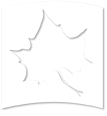Dr. Alex Badillo
Education
- Ph.D. - Anthropology , Indiana University, Bloomington - 2019
- M.A. - Anthropology, Indiana University, Bloomington - 2013
- B.A. - Anthropology and Spanish, Radford University - 2005
Professional Webpage
alexelvisbadillo.weebly.com/Licensures and Certifications
- Certificate in Digital Arts and Humanities - Indiana University - 2019
- Small Unmanned Aircraft System Certificate - Federal Aviation Administration - 2019
Intellectual Contributions
- Ballcourt representations of Quiechapa, Oaxaca, Mexico: Ritual offering, fertility, and life - Ancient Mesoamerica - 2022
- SfM Photogrammetric Field Methods for Historic Burial Excavations: The case of Bethel Cemetery - Advances in Archaeological Practice - 2020
- Ancient Settlement Patterns and Land-use Dynamics in Rural Quiechapa, Oaxaca, Mexico - 2019
- Narraciones de Quiechapa: Considerando la Evidencia Material del Recorrido Sistemático - Cuadernos del Sur, Oaxaca - 2017
- Más que conquista: un cuento de dos fortalezas en la región de Nejapa, Oaxaca - 2014
Presentations
- Integrating UAV mapping and SfM photogrammetry into a regional pedestrian survey of the Ocoña and Chorunga river valleys in southern Peru. In the Footsteps of Toribio Mejia Xesspe: The Corral Redondo Archaeological Project, 2020.
- Quiechapa: A Window into the History of the Sierra Sur. 84th Annual Society for American Archaeology Conference, 2019.
- The Bethel Cemetery Relocation Project: Academic Collaboration, Archaeological Science, and CRM. 84th Annual Society for American Archaeology Conference, 2019.
- Digitizing the Past: Ancient settlement patterns, public archaeology, and virtual heritage in Oaxaca, Mexico. 2nd annual Barbara D. Jackson Lecture in Anthropology, 2018.
- Mapping from the Heavens: UAV(Drone) Data Collection at Monte Alban, Oaxaca, Mexico. 83rd Annual Society for American Archaeology Conference, 2018.
Contract, Fellowship, Grant or Sponsored Research
- Grant: Sycamore Collaborative Visualization Classroom and Makerspace: A collaborative advanced visualization and 3d modeling cross-disciplinary classroom and maker-space - Indiana State University 2019 - 2019. Funded - $99,468
- Grant: Equipment to Support UAV Remote Sensing, Data Provision, and Outreach Efforts - IndianaView Consortium 2019 - 2019. Funded - $1,500
- Grant: Three-dimensional modeling experience with The Children's Museum of Indianapolis - Indiana State University 2018 - 2018. Funded - $2,995
- Grant: Doctoral Dissertation Research Improvement Grant, National Science Foundation (#1543934) - National Science Foundation 2015 - 2016. Funded - $21,788
Ph.D. from Indiana University, Bloomington, IN, 2019.
Major: Anthropology.
Specialization: Archaeology in the Social Context.
Certificate: Digital Arts and Humanities.
Minors: Sociocultural Anthropology, Latin American and Caribbean studies.
M.A. from Indiana University, Bloomington, IN, 2013.
Major: Anthropology.
Specialization: Archaeology in the Social Context.
Minors: Sociocultural Anthropology, Latin American and Caribbean studies.
B.A. from Radford University, Radford, VA, 2005.
Majors: Anthropology; Spanish.
My research engages with the local community in San Pedro Mártir Quiechapa where I do fieldwork. In 2013, I began working collaboratively with local town authorities to complete an ethnographic study of the region investigating modern land-use and agricultural practices and its connection to religious ritual (both Zapotec and Catholic). During this research, I found that a good portion of the people who are still active in the community live and/or work outside of Quiechapa in Oaxaca and Mexico City (and beyond). Because of this, I started a Facebook page that engages 500+ community members near and far in discussions about my ongoing research, and has served as a dynamic, interactive platform for disseminating research results. Moreover, while completing fieldwork, I involved Quiechapa residents in the research process and participated in multiple community events to discuss project goals and share preliminary research results. I hope to continue to nurture this research relationship as I move forward with my work.
Academic focus: Settlement pattern studies, human/environment interactions, public archaeology, digital heritage.
Methodological specialties: Archaeological survey and mapping, Structure from motion photogrammetry, UAV mapping.
My research focuses on investigating the history of people living in the Zapotec rural region of Quiechapa, Oaxaca, Mexico. The goal of my research is to understand the relationship that people from Quiechapa had with the landscape and what factors, cultural and/or environmental, contributed to the ways in which they used their land. Using archaeological, ethnographic, and linguistic methods, combined with Geographic Information Systems (GIS), I hope to understand the complexities of Quiechapan local land-use. I believe that an anthropological approach can make useful and much needed contributions to research in sustainability science and human-environment interactions. Learn more about my research program by visiting El Proyecto Antropologico de Quiechapa (PAQuie)
My other research interests involve aerial archaeology and Structure from Motion (SfM) photogrammetry of landscapes, architecture, artifacts. I have been testing the utility of Unmanned Aerial Vehicles (UAVs, drones) for remote site discovery in archaeological survey, making digital elevation models of cleared landscapes and 3D models of architecture.
Recently, I was part of a collaborative project at the UNESCO world heritage site of Monte Albán. My role on the project was to create a 3D scale model of the Main Plaza and surrounding architecture using a UAV. From this model we were able to calculate the volume of the architectural features at the site and also analyze the microtopography of the Main Plaza. Click here for more information about this project. Currently, I am working to develop a project utilizing these 3D models in virtual reality (VR) environments.


